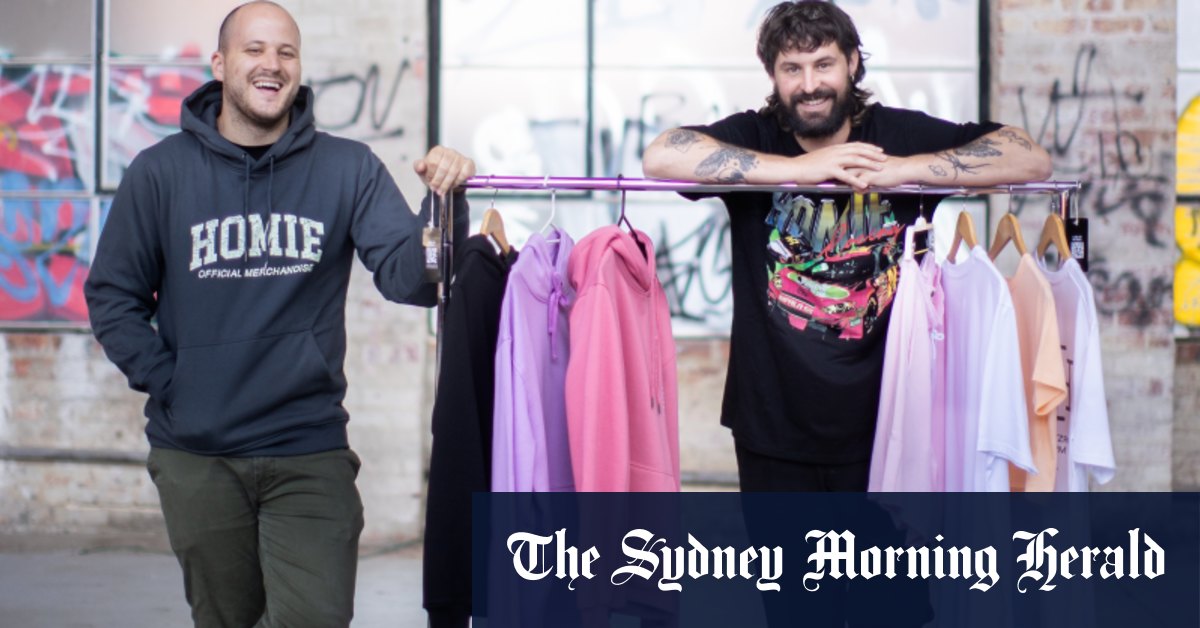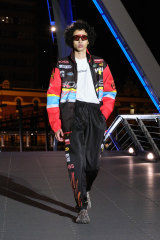
HoMie improvement: tackling youth homelessness, one hoodie at a time
After costs, including rent and wages for the team of eight full-time staff (plus part-timers, contractors and casuals), the profits are ploughed into a training program for the homeless that includes an eight-month paid internship at the HoMie store, plus a TAFE qualification in retail operations, and personal development help. Since launching in 2017, some of the program’s 30-odd graduates have gone on to work at companies such as Apple, Cotton On Group and Jetstar.
“We can be a launching pad, we increase foundational skills, confidence, aspirations.”
Not everyone who starts the program finishes; issues range from mental illness and drug and alcohol dependency to poor access to transport and childcare. Pearce, who serves as HoMie’s chief executive, is quick to assert this should not be seen as failure – on the part of students or the organisation.
“We’re not the entire solution, but we’re a critical piece of the puzzle,” he says. “We can be a launching pad, we increase foundational skills, confidence, aspirations … There’s a lot of trauma. The fact a lot of them can even make it to this place is pretty impressive.”
Located a short walk from the cafes of Fitzroy’s gentrified Brunswick Street, HoMie’s HQ is a draughty, cavernous industrial space, a far cry from the shiny, slick offices of some not-for-profits. Boxes of clothing ready to send to the store or online customers are stacked haphazardly in one room, while in the next, the team works quietly, surrounded by subtle – and not-so-subtle – reminders of the brand’s purpose. Posters on the walls display the stark statistics – one in every 200 Australians will experience homelessness at some point – while elsewhere there are paintings by artist Jamie Morrison of homeless people from other cities around the world.

An upcycled bomber jacket from the Reborn range.
Social mission aside, Crook carries the creative burden of turning HoMie from a cottage brand of do-gooders into a respected fashion label. In such a saturated market, even the most value-driven consumer is spoilt for choice, meaning HoMie can’t trade on morals alone; it has to have the design chops to drive sales, which in turn fund the “real” work of the retail program. Crook says balancing HoMie’s fashion ambition with its original purpose, to help curb youth homelessness, is “the constant challenge … We have to stay on top of the trends. If the product’s not good, people aren’t going to come back.”
Still, it seems HoMie’s mission to “make caring cool” is paying off, thanks to a post-COVID-19 jump in “conscious consumption”.
A range of upcycled bomber jackets (each a one-off, produced under the Reborn sub-brand) shown at Melbourne Fashion Festival in March this year defied the clichés associated with social enterprises – homespun, chintzy, unfashionable – and stood out against more established brands. The following month, the brand was recognised for more than just its welfare arm, winning a Victorian Premier’s Design Award. Despite these achievements, imposter syndrome looms large.
“We still feel a little out of place, like, what are we doing here?” says Pearce.
“It’s a credit to the aesthetic Marcus has created. It’s a brand that’s very inclusive, ‘talkable’, it’s a great conduit to so many things. It stands on its own two feet, it’s legitimate. We’ve got something that’s special, we have brands knocking on our doors [to partner with us].”
Indeed, HoMie has recently partnered with US streetwear brand Champion on a range of sweatshirts that feature both brands’ logos in a custom-embroidered design.
Still, there’s no time to rest. The simultaneous end in late March of both JobKeeper and the Victorian government’s moratorium on residential evictions has experts fearing a new surge in homelessness. For Crook and Pearce, that means HoMie needs to lift both sales and funding to service more clients through its free shopping days and, ideally, its training program.
In 2019-20, HoMie’s revenue was about $1.3 million, and is currently split roughly 60:40 between sales and philanthropic contributions (with small amounts of federal government support). HoMie’s staff all draw salaries but Pearce stresses they are well below market rate, even compared with other not-for-profits. One of its goals in the next few years is to achieve financial self-sufficiency as an organisation.
Loading
“We’re not a highly profitable company yet,” Pearce says. “We’re still trying to build a plane while it’s taking off. We are on the cusp of really breaking through … If we can get more young people into employment and a place of self-sufficiency, we’re going to be able to solve this issue [of homelessness] … that’s an exciting challenge for us.
To read more from Good Weekend magazine, visit our page at The Sydney Morning Herald, The Age and Brisbane Times.
Have a Good Weekend all week
We deliver the best of Good Weekend to your inbox so it’s there when you’re ready to read. Sign up for the Herald‘s Good Weekend newsletter here and The Age‘s here. Sent every Saturday.
Stay connected with us on social media platform for instant update click here to join our Twitter, & Facebook
We are now on Telegram. Click here to join our channel (@TechiUpdate) and stay updated with the latest Technology headlines.
For all the latest LifeStyle News Click Here
For the latest news and updates, follow us on Google News.

